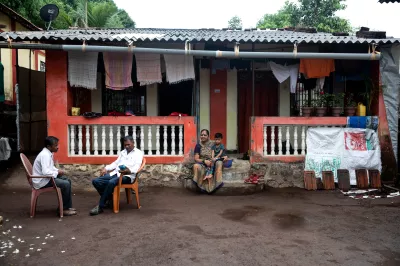The Cost-Benefit of Electronic Payment Systems: The Case of India
A few months ago, I blogged about the intersection of social protection and financial inclusion and wondered if these regular, consistent payments from governments could be a catalyst for bringing beneficiaries more easily into the formal financial system. Electronic payments hold particular promise, and the key question is: What is the cost-benefit for a government to connect all households to an electronic payment system.
While still at McKinsey, CGAP’s new CEO Tilman Ehrbeck was part of a team that assessed these potential costs and benefits in the Indian context. Their recently released report, Inclusive growth and financial security: The benefits of e-payments to Indian society, estimates that automating all government payment flows could save the Indian government up to $22.4 billion annually, almost 10% of the total payment flows between the government and household (estimated to be $296 billion, or $250 per capita). These savings would cover the required investment within the first year. The report was done in partnership with the Bill & Melinda Gates Foundation and has been picked up in the Indian press.
Where would these savings come from? The report identifies 3 current payment inefficiencies:
1. Leakages account for 75-80% of the total losses due to the diversion of benefits to unintended individuals. For example, beneficiary rolls were found to contain absentee workers and deceased people. Misrepresentation of man-hours in the public works programs also occurs frequently.
2. Transaction costs account for 15-20% of total losses due to the higher cost of making payments manually compared to electronic processing. The use of cash or checks increases the transaction cost for both the government and the beneficiary: for the government in transferring information between government offices, and for the beneficiary in the long distances to access the payment. The report estimates that for every 1 USD the government pays to a National Rural Employee Guarantee Scheme (NREGS) worker, it spends about 6 to 7 cents of lost wages and travel costs for the worker to redeem the benefit.
3. Administrative and overhead costs account for 5-10% of total losses due to the manual processes used for auditing and payment reconciliation. For example, welfare budget planning can be cumbersome when the data to inform this analysis are maintained in manual records, making data aggregation and analysis costly and complex. The report also identifies and quantifies additional indirect benefits of rolling out an electronic payment solution in India, such as increased tax collection and better monitoring of suspicious monetary flows.
The report provides details of the 3 main actions that will be required to establish an e-payment system in India:
1. Create the required infrastructure: Such infrastructure includes basic computer and software application infrastructure, broadband connectivity, financial agents to carry out transactions, and an identity authentication infrastructure. The report estimates that this will entail a one-time cost of USD 13-15 billion that will pay for itself in a year against the potential savings of about USD 22.4 billion annually.
2. Encourage commercial players to use the infrastructure: It clearly follows that if the infrastructure is built, then the private sector should be incentivized to use it. For example, banks and other financial service providers should consider actively developing products suited to the average rural and poor households, and distribute these products over the e-payment infrastructure.
3. Set guidelines in several areas to maximize the government’s utilization of the payment infrastructure: If the government expects commercial players to use the system, then they must practice what they preach and use it as well. As a start, for example, central and state governments could make all salary payments electronically into employee bank accounts.
Admittedly, creating an e-payments system is a huge task for any government to undertake. But as the report says,
delivering government payments electronically to the poor will not only pay for itself but will connect households to a formal and secure financial grid. The basic infrastructure and connectivity this provides will also create an attractive business proposition to encourage private players to enter this space and provide services to the poor.
An opportunity worth pursuing.
- Sarah Rotman




Add new comment